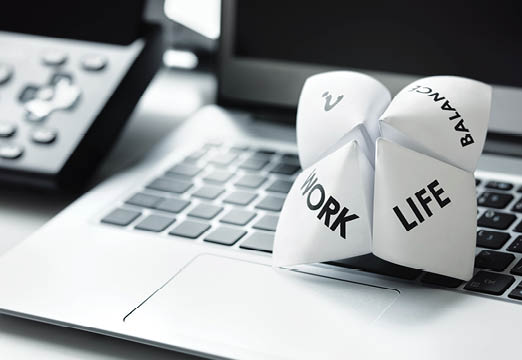The New Hybrid Workforce & Its Impacts on Employee Emotional Health
- Corporate Culture

For the second time in 12 months, we are changing the fundamental nature of how people work. As businesses begin to recover from COVID-19, many are transitioning to a new work structure called the “hybrid workforce.”
Returning to the office combined with some level of remote work is expected by our employees, but it is also a big change for them. As leaders, it’s easy to categorize this as an adjustment. But for the individual employee, this is literally another life-changing event, in a series of life changing events that can have significant ripple effects on their personal lives.
So instead of treating this as “business as usual,” we can be more successful if we seek to understand and account for the impacts business decisions will have on our team’s personal lives.
Not just because we care about them, but because it is good business.
Understanding Your Employees’ Concerns
Engagement, productivity, and positively impacting the emotional health of our teams are all key factors to business success.
In the future, when we look back, we will see this time as a monumental shift in how business is done. So, let’s take extra care to try and get it right. A good place to start is understanding our employees’ state of mind.
Here are few areas of concern from employees pulled from recent surveys and research:
- “I just got comfortable working from home. What is it going to be like trying to adjust to this new hybrid work plan?”
- “Will the people at work be taking the proper precautions? Will it be safe?”
- “What’s going to happen with my kids? Are they going back to school or continuing to learn remotely? Will my spouse be going back to work, as well, or will they be able to stay home with the kids?”
- “I am not sure how I feel anymore. Am I happy or sad (angry, frustrated, lonely)?”
- “All of my friends are talking about people they know with depression, anxiety, and other challenges. Should I be worried?”
- “I am not sure how the expectations at work are going to change. Will they want me to do more and work more hours? I am pretty maxed out as it is.”
Statistics to Consider for Post-Pandemic Work
As you work on your business plans, here are some stats we’ve found and that you may wish to consider.
Depression or Anxiety
The Centers for Disease Control and Prevention (CDC) found the number of U.S. adults who report symptoms of depression or anxiety has averaged approximately 40 percent since April 2020; the comparable figure in early 2019 was 11 percent.
Professional Life Impacts Personal Life
An astounding 85 percent of people say mental health issues at work (i.e. stress, anxiety, and depression) affect their home life. The most common repercussions were sleep deprivation (40 percent), poor physical health (35 percent), reduced happiness at home (33 percent), suffering family relationships (30 percent), and isolation from friends (28 percent).
Blurred Lines Between Personal & Professional Worlds
As boundaries have increasingly blurred between personal and professional worlds with people working remotely, 35 percent of people are working 40+ more hours each month, and 25 percent of people have been burned out from overwork.
Employee Expect Mental Health Support
When it comes to mental health, 76 percent of employees expect their businesses to do more to support them.
So, What Can Businesses Do?
First, and most importantly, how you communicate is key. Planning and communicating with your employees’ emotional health in mind lets them know you are on their side, you feel their pain, and you will support them through this change.
You also need to create safe spaces that encourage self-identification of emotional health challenges and provide easy anonymous paths for employees to enter a mental healthcare pathway. Getting help should be an easy decision and a simple, painless process.
If you’ve never checked out Joyages, I would encourage you to do so. Joyages is an app that teaches skills and habits to help your employees improve their emotional health. It also provides Life Coaching, Anxiety, and Depressions Assessments, and mental health resources in the palm of an employee’s hand.
Finally, as we build the new hybrid workforce, try and focus on flexibility, autonomy, and listening. One size does not fit all. Each employee has a different situation, and those situations will be constantly changing. You can provide an environment that adapts to their needs, enables them to choose what is best for their family and their performance, and then listen to what adjustments will be most helpful and effective.
As many businesses transition to a hybrid workplace and begin the COVID-19 recovery, it’s important to consider and understand the state of mind of employees. Their emotional health has been and will continue to be stretched to the limit. How can you help and support rather than making the problem worse? The choices we all make and the flexibility we all create will determine our long-term success as well as the happiness and health of our organizations.
If you have any questions on this or how to help your employees with all the upcoming changes, please don’t hesitate to reach out to my team and we will help any way we can. You don’t have to do this alone!
April 15, 2021